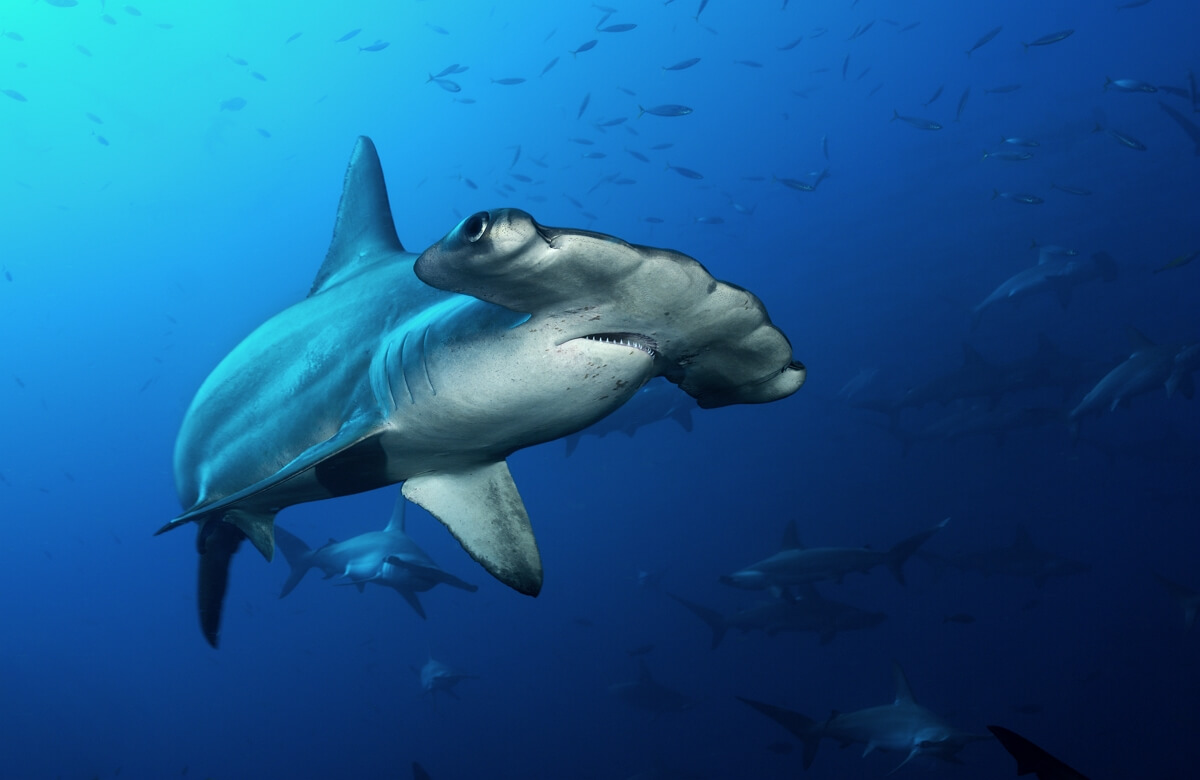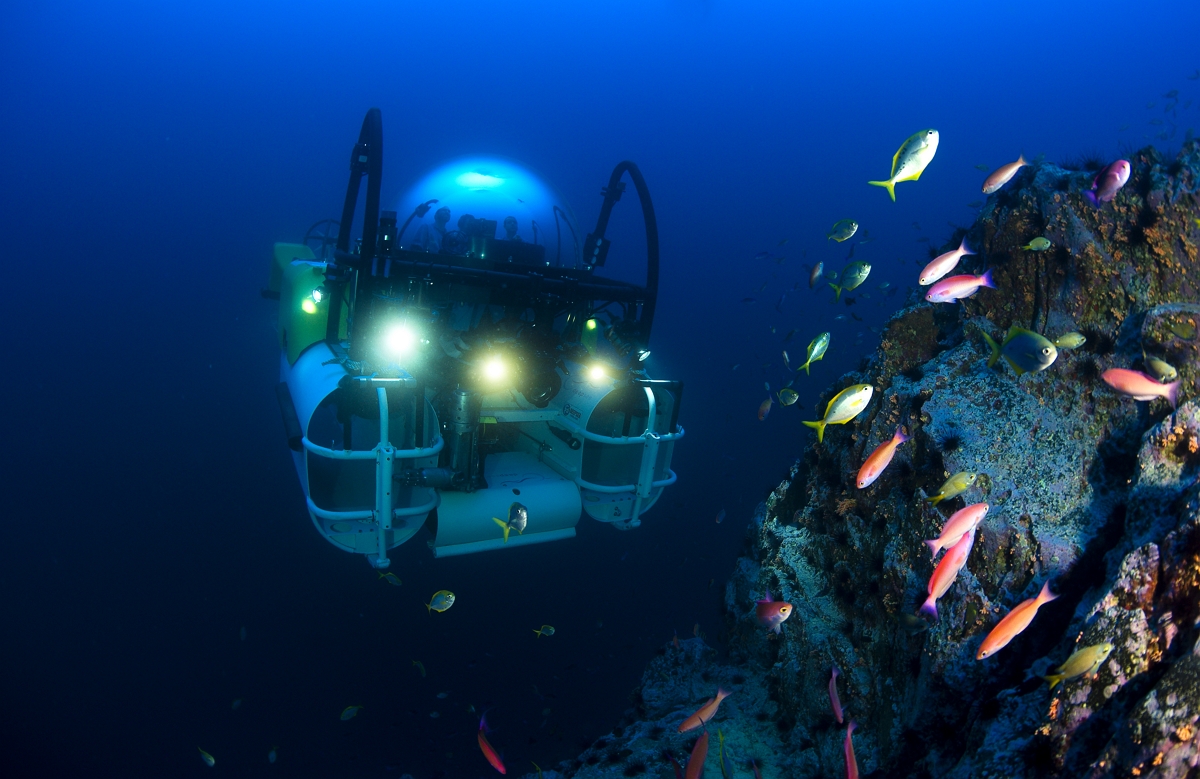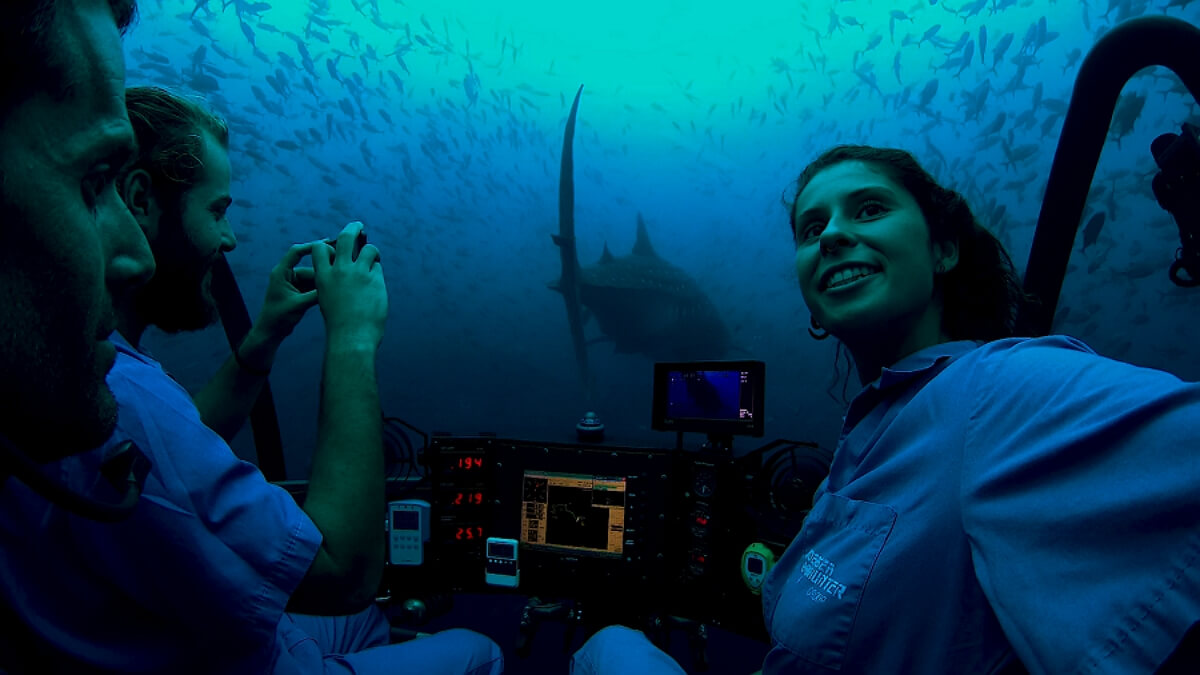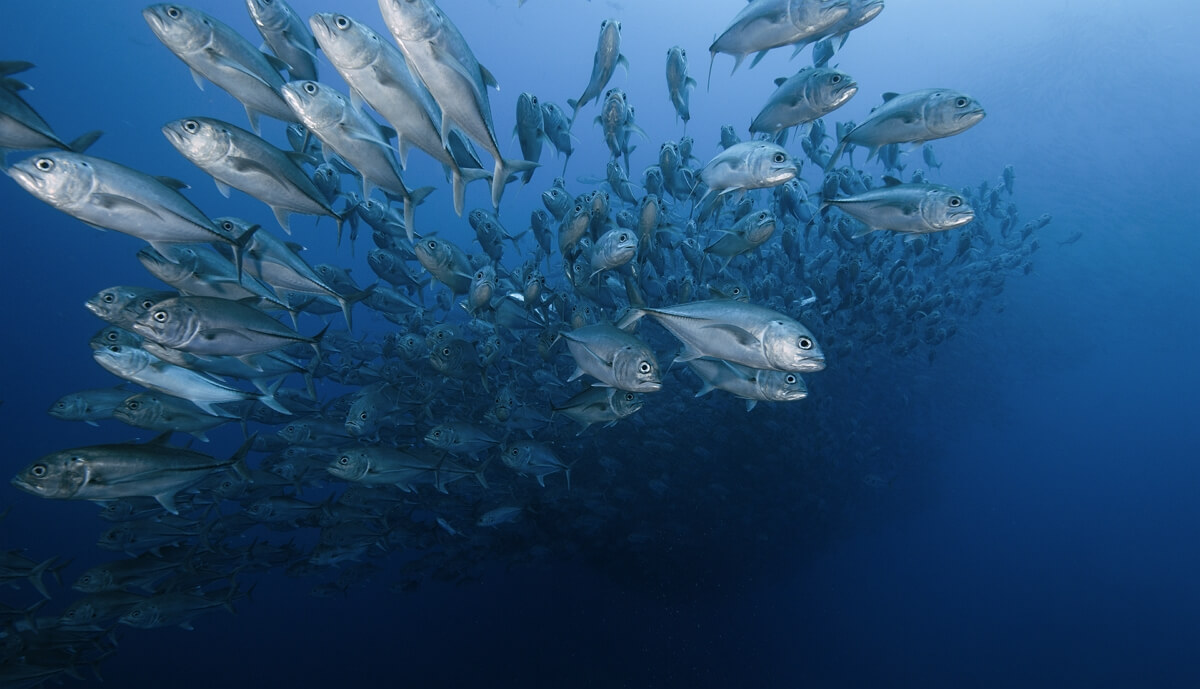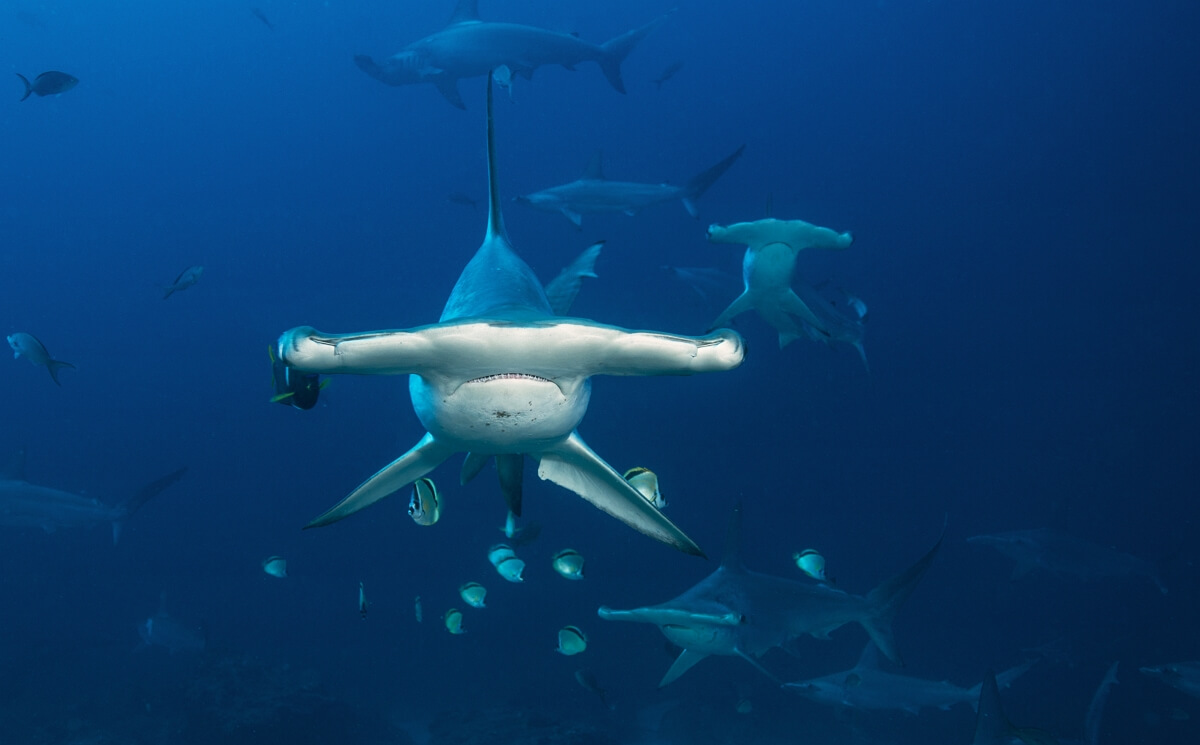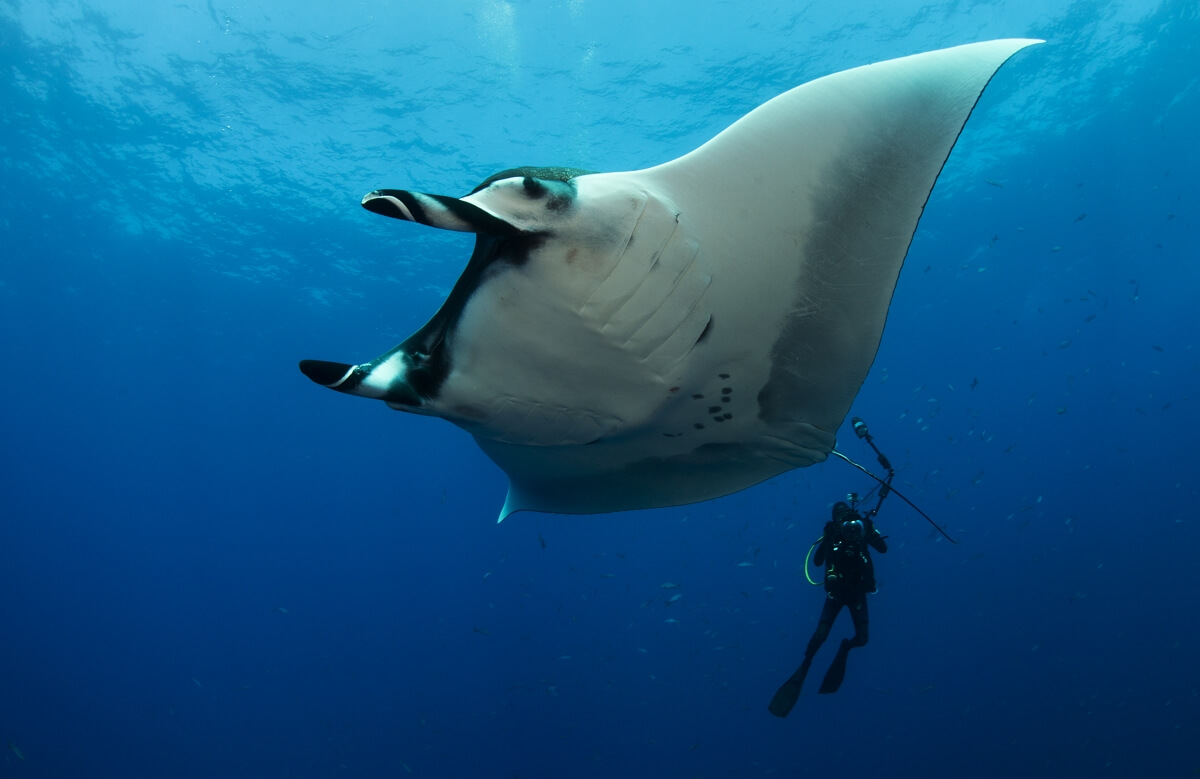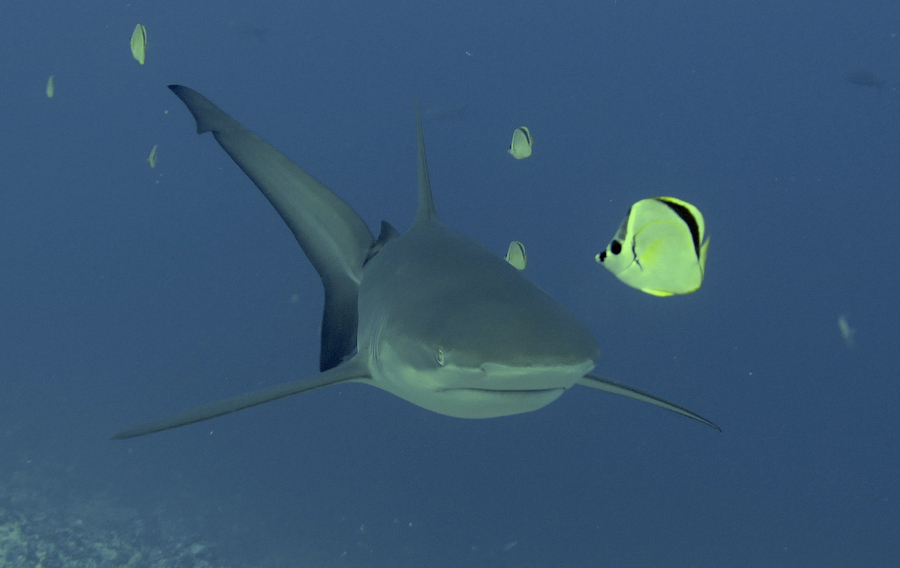Cocos Island
The Ocean’s Last Frontier
There are few truly remote places left on earth. Welcome to shark island, 312 miles off the coast of Costa Rica.
Born from a volcanic eruption over 2 million years ago, the island’s basalt cliffs are surrounded by some of the most spectacular diving on the planet.
Here, pristine waters take you back in time to unspoiled oceans; where you’ll encounter large pelagic travelers including rays, whales, dolphins and a dozen species of sharks. And let’s not forget the larger-than-life schools of scalloped hammerheads.
Often shrouded in mist and mystery, Cocos Island is known for its rich history of explorers and adventurers that dates back centuries – as evidenced by the ancient rock carvings that emerge at low tide in Chatham Bay.
Topside, Cocos Island National Park is a living laboratory with scores of endemic species. Beneath the surface, it’s a safe haven for marine animals big and small – from endangered whale sharks to the endemic rosy-lipped batfish. Among the sharkiest places on Earth, Cocos is truly one of the last frontiers for extreme scuba divers.
Biodiversity
Cocos Island is teeming with marine life including 12 species of sharks, 4 types of rays, 4 species of sea turtles and 16 different marine mammals. Divers commonly encounter large schools of hammerheads and jacks, tiger and Galapagos sharks, marble rays, frogfish and octopuses. The island is home to at least 27 endemic fish species, including the Cocos rosy-lipped batfish.
The terrestrial life here also exhibits a high number of endemic species. The island is home to 70 of the 235 identified vascular plant species in the world, some 25 species of moss, 27 species of liverwort and 85 species of fungus. There are upwards of 87 kinds of bird, including the endemic Cocos Island cuckoo, finch and flycatcher. There are 362 species of insects, of which 64 are endemic. Two native reptiles can only be found here.
Program
| Day 1 | Generally between 8 AM and 1 PM we pick up from certain hotels and transfer everone by bus to Puntarenas, where you will board the vessel. The drive takes about 2.5 hours. Due to occasional low tides our boats may need to depart from the pier earlier in the day. Should this occur, you will be transferred by skiff to the vessel. When all passengers are aboard, the vessel will take the 32-36 hour cruise out to Cocos Island. |
| Day 2 | The crossing. Guests can use this time to organize dive and camera gear, and to relax and enjoy the sunshine. Watch videos or chat with our crew to get even more geared up for diving. You can also take this time to take one of our diving courses, like the nitrox certification. |
| Day 3-8 | These days are spent diving the incredible sites all around Cocos Island. Divers usually average 3 dives per day at depths of about 60-100 feet (18-30 meters).
Typical day at the island: 7 am - breakfast buffet 8 am - first dive 9:30 am - snack 11 am - second dive 1 pm - lunch 2:30/3pm - third dive 4 pm - snack 7 pm - dinner 8 pm - evening activity/special presentation |
| Day 9 | Make the last 3 dives before the crossing back to Costa Rica. |
| Day 10 | Compare adventures with new friends, and enjoy sharing everyone’s photos and videos! |
| Day 11 | Arrival to Puntarenas. Immediately after breakfast you will be transported back to San Jose. We strongly recommend staying one more night on land, before flying out, in case of any unforeseen delays. |
Location: 312miles/502km from Costa Rica’s mainland
Latitude & Longitude: 5°32’N and 87°04’W
Land area: 9.3mi²/24 km²
Marine area: 763mi²/1,997 km² (with a radius ≈ 12 nautical miles/22km)
The island’s verdant terrain occupies some 10 square miles or 24 square kilometers and is punctuated by four mountain peaks, the tallest being Mount Iglesias, rising some 2080ft (634m) above sea level.
Cocos Island was designated a UNESCO World Heritage Site in 1997. It’s also been called one of the seven wonders of the natural world – spend some time here and you’ll quickly understand why.

